Merida ... Where the Music Plays on!
Saturday, February 15, 2014
 Merida, Yucatan Peninsula, Mexico
Merida, Yucatan Peninsula, Mexico
The Mayans built raised paved roads called sacbeob, or white ways, as they were covered in limestone stucco, so they were easier to see at night when travel was cooler. One started in Puerto Morelos, went through Izamal then Ake and ended at Merida, 13m wide and some 300km, with parts remaining. We took the highway however, and stopped at Ake,e where there are three buildings surrounding the main plaza, and lots of outer ruins too. The Building of Columns is the most impressive, and would probably have had a roof, and we wandered around almost on our own in the sunshine taking pictures.
We then continued to Merida, which became wealthy thanks to the henequen, and was influenced more by European trading partners than central Mexico. Elegant town houses and public buildings were made from French bricks and tiles brought over as tradeable ballast for the henequen. The city's wealthy fancied themselves in the Paris of Mexico, and Merida is still elegant and bustling. Fancy buildings include blue Casa de la Cultura Juridica, apparently Mannerist with a Baroque influence, or referred to locally as the cake!
Paseo de Montejo is an elegant boulevard lined with magnificent mansions including Casa Montes Molina, bought in 1915, still owned by the family and kept as a museum of that era, a showcase for European style.
The town centres on the main plaza, surrounded by the 16th century Catedral de San Ildefonso, the oldest cathedral in the Americas, Palacio Municipal and Casa de Montejo of the same date, and the 19th century Palacio Gobierno with murals telling Merida's history.
There are lots of tree filled square and local churches, an elegant Teatro and Paseo Montejo where the wealthy had their homes.
We went to the Merida English library one morning, and heard a talk about the history of Merida architecture over coffee and cake, then got to see behind the facade of several residential properties that had been renovated. What we hadn't fully appreciated was that apart from one, they were ready for sale, targeting the ex-pat community, and although this was also a fundraiser for the library, any resulting sales would no doubt have been appreciated! It was still interesting to see how local houses of just two downstairs rooms get developed into modern living spaces, often over two floors with pool and guest cabana to boot. Mind you with prices around 400USD, you can see the attraction and we felt like we were in our own little version of Location Location!
One of the most striking things was that many of the houses have original paste tiles originally imported from Europe and they are lovely.
As we were walking we saw picture plaques naming the street corners with pictures. These replace the original statues which would have been mounted on top of the building, to clear up any language confusion in a Spanish-Maya City, and keep a tradition alive.
Our hotel Luz en Yucatan, another treasure hidden behind a blank facade, with a courtyard and our lovely first floor room overlooking the pool. There was a noisy flock of Canada geese that gathered around happy hour, but we met a couple of very nice Americans.
There is music every day of the week! Over the weekend, the centre is closed to traffic and people browse through handicraft stalls and shops, stop for drinks and listen to music from all over Mexico, playing till late. Sunday morning we were awoken by more music ... or rather drumming, just after 7. Eventually too intrigued not to get up, unlike some who refused to budge, I went to have a look and saw the last runners over the finish line in a University of Yucatan half-marathon, with all the noise coming from just a 5-piece drum band!
Later in Parque Santa Lucia, a band plays every Sunday 11-3, attracting a huge crowd of locals, many of whom join in with the dancing, and if you have any extra energy, there is more dancing in the main plaza in the evening. Tuesday evening is the turn of Parque de Santiago and although we arrived late, we had time to have one dance.
We looked round a museum telling the story of trova Yucateca, local music which draws on Cuban and European rhythms combined with local sounds, to produce dreamy sentimental ballads. There were lots of photos, and spookily on the death theme, a death mask of Vicente Uvalle, a Mexican composer. Trova is still performed by trios of trovadores who can be seen in the main plaza ... you get 3 songs for 100 pesos!
We made enquires about the football match we had planned to to go ... only to discover we had a long way to go as the match in question was in Merida, Spain! Fortunately CF Merida were also playing, somewhat closer to home, so we made their match against Necaxa. Our ticket was 70 pesos - £3.50 for both of us and the beer was only £1! I'm no fan, but the whole experience was fun, seeing the team mascot - a deer, the cheerleaders, fireworks, the families watching the match together, the food vendors, and we even saw the team coach! Needless to say, there was music here too, with a band at each end in constant conversation! Chris said the football was ok, a bit more muscular than at home ... in other words they kept bumping into each other ... but Merida won 2-1 and each time they got a goal we were even sprayed with beer from enthusiastic supporters behind us!
Time for some more food pics! We went to Chaya Maya a couple of times, serving traditional Yucatan fare, and you can watch the ladies make the tortillas. I had fish rubbed with a achiote, a local spice paste with orange annatto seeds, garlic and cloves, then baked in banana leaves, so good I had it twice! Chris had spinach tamale or dumpling stuffed with hard boiled eggs and pumpkin seed paste. Chris also engaged one of the trovadores to serenade me which was very romantic and he sang a song about Merida.
One day we took a trip out to ruins at Mayapan and Acanceh. It was a bit of a challenge finding the right road out of Merida, but eventually we were on our way after we stopped and asked a policeman. Acanceh is a small town with a huge Franciscan church on one side of the plaza ... and a pyramid on the other whose particular claim to fame is that there are still four stucco masks in situ on the corners.
On to Mayapan, a large site, with a rather disputed history, but nonetheless there remains a main pyramid with some stucco reliefs at the base of decapitated warriors - maybe heads would have been displayed in the niches, as well as another smaller pyramid, other ceremonial temples, colonnaded halls and altars, but no ball court. There were several bits of carving including the head of Chac the rain god, and some stucco painted with a bound crocodile.
On our last evening, we visited Casa Catherwood. In a way, Frederick Catherwood and John Lloyd Stephens are the reason we are in the Yucatan. Starting in 1839 they discovered many overgrown Mayan ruins and brought them to public attention in "Views of Ancient Monuments in Central America, Chiapas and Yucatan", a travel diary of the trip written by Stephens, illustrated with Catherwood's lithographs. Their style is slightly romantic, assuming his draughtsman ship was accurate, we are looking forward to seeing Uxmal and Tulum to see how the how the detail on the ruins compares almost 200 years later.
We had dinner as Casa Frida afterwards, which deserves a mention for the bright and cheery decor, another homage to Frida Kahlo, together with cosy courtyard, the fabulous food, possibly our best meal yet ... and Coco. I had a poblano chile stuffed with ground beef, apple, pear and plantain covered with a cream and walnut sauce, and Chris had tortillas stuffed with cheese and covered with delicious mole - the best we'd tasted. Unfortunately we dug in before remembering a photo, so you will just have to visit!
Time to move on again, back to the seaside ... Celestun here we come!
Other Entries

 Merida, Yucatan Peninsula, Mexico
Merida, Yucatan Peninsula, Mexico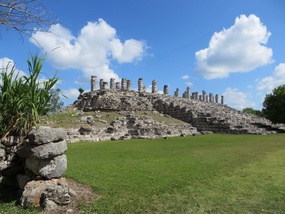

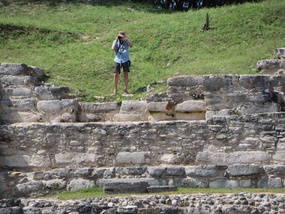
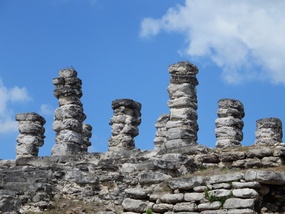
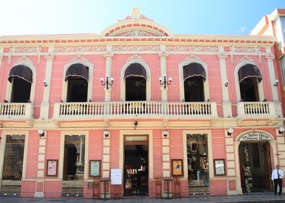
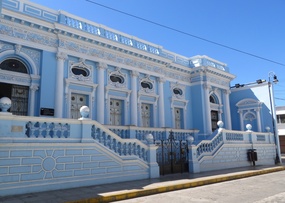
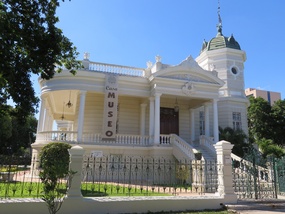
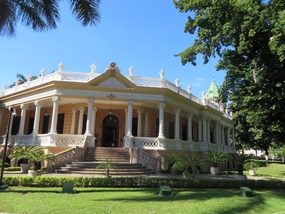
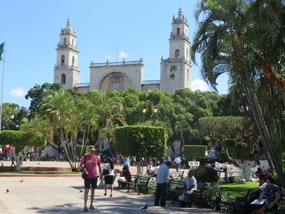
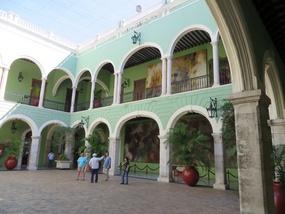
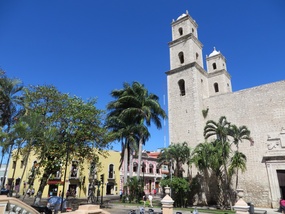
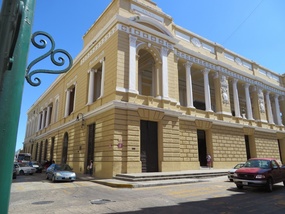
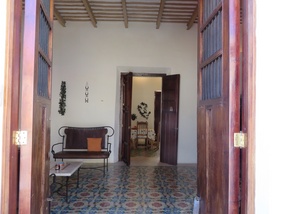
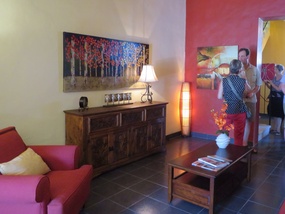


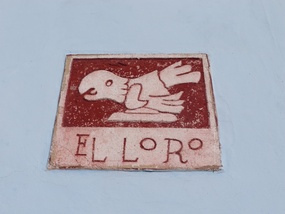
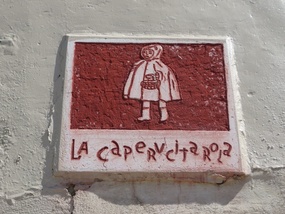
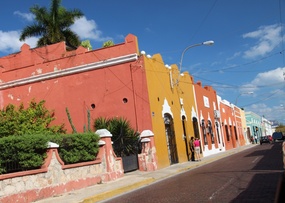
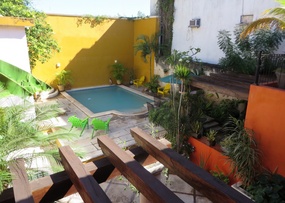
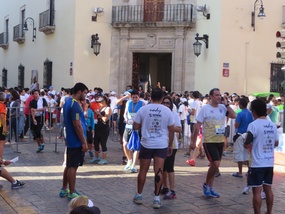
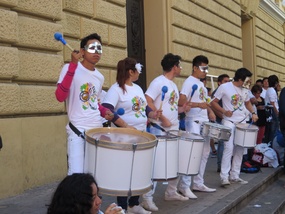
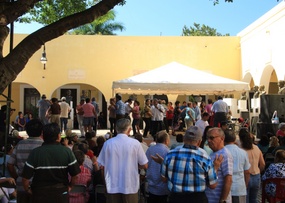
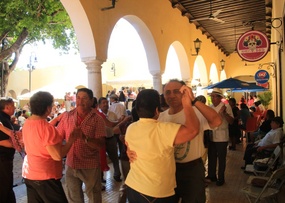
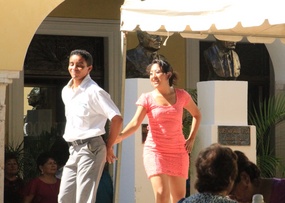
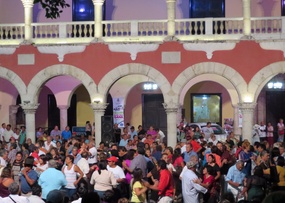
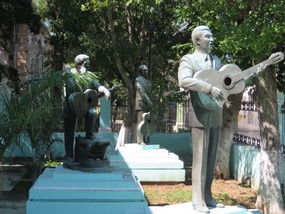
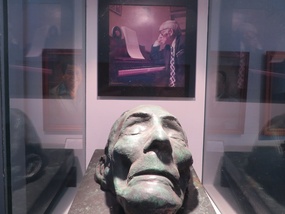
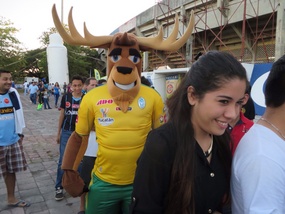
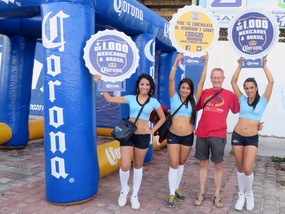
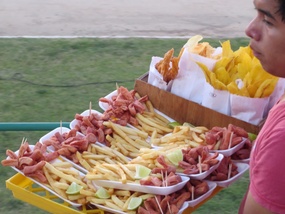
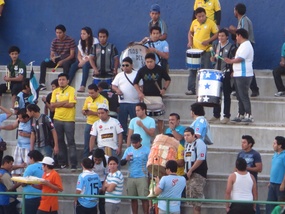
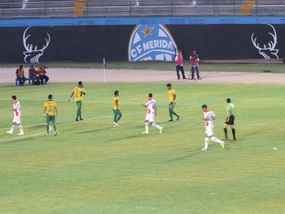
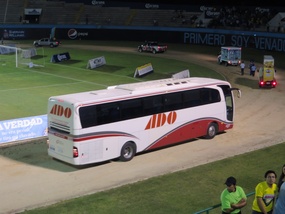
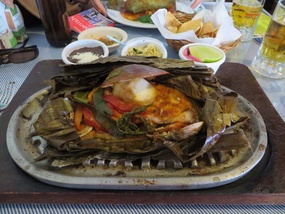

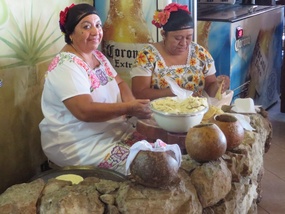
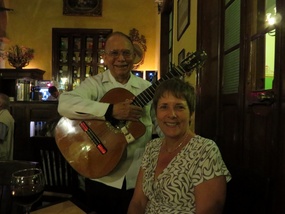
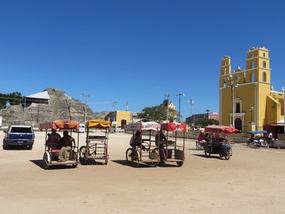
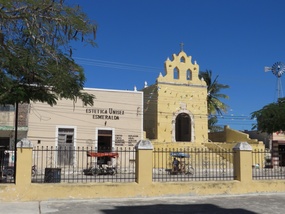
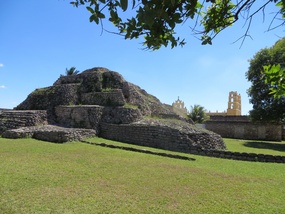
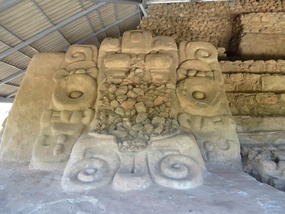

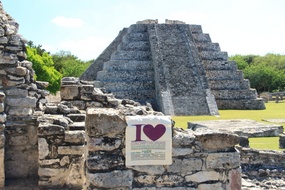
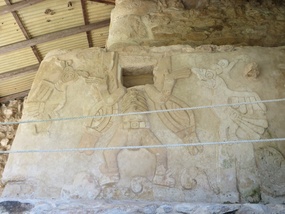
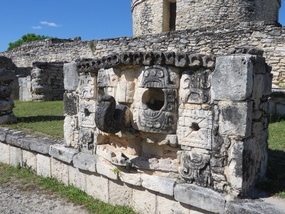
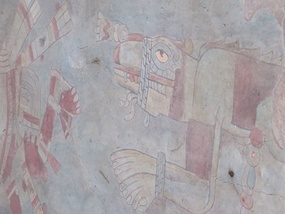
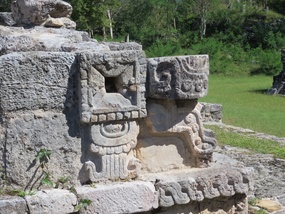
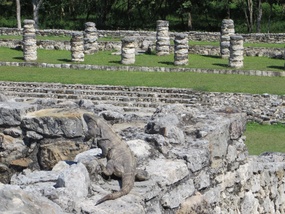
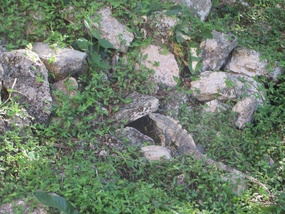

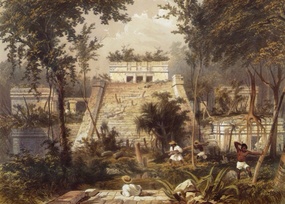
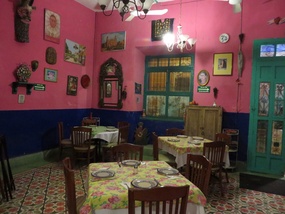
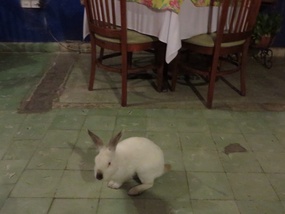

2025-05-23